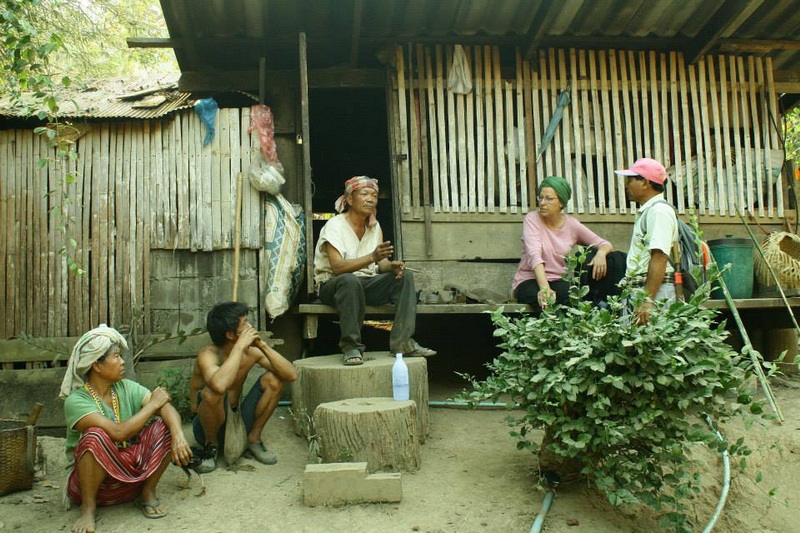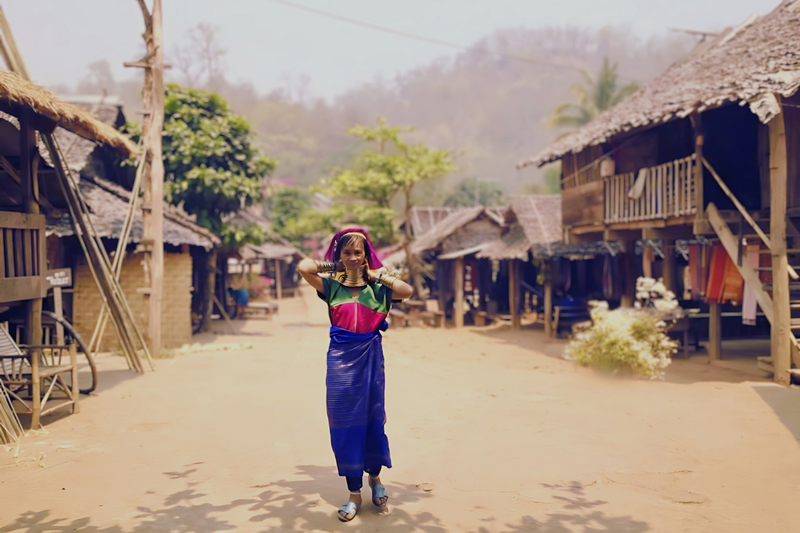The Karen People: A Deep Look into Culture, History, and Responsible Tourism

🏞️ Origins and Homeland
The Karen people belong to the Sino-Tibetan language family. Their ancestral roots are believed to trace back to southern China and Tibet before migrating into Myanmar around the 4th–9th centuries CE. From there, they spread across the hilly terrains of Karen State and Kayah State. Political conflicts and civil wars in Myanmar later drove large numbers of Karen to settle in northern and western Thailand, especially in Chiang Mai, Mae Hong Son, and Tak provinces.
🌿 Subgroups of the Karen
The term “Karen” is an umbrella covering several subgroups with distinct identities.
-
Sgaw Karen (Pga K’nyau): The largest Karen group in Thailand, with their own language and traditions.
-
Pwo Karen: Another major branch, speaking a different dialect.
-
Karenni or Kayah: Based mainly in Kayah State, Myanmar.
-
Kayan: A subgroup of the Kayah, best known internationally for the Kayan Lahwi (Padaung) women, also called the “Long Neck” Karen.
Though often grouped under one name, each subgroup carries unique languages, rituals, and cultural expressions.


👩🦱 Long Neck vs. Non–Long Neck
The world-famous “Long Neck Karen” refers only to women of the Kayan Lahwi subgroup. Some of them wear heavy brass coils around their necks starting from childhood. These rings do not literally lengthen the neck; instead, they push the collarbone and shoulders downward, giving the illusion of an elongated neck. It is a symbol of beauty and cultural identity, not a universal Karen tradition. By contrast, the majority groups like Sgaw and Pwo Karen do not practice this custom.
🗣️ Language, Religion, and Beliefs
Karen languages fall mainly into Sgaw and Pwo branches, both using scripts adapted from Mon–Burmese writing systems. Their grammar follows an S-V-O order, quite unusual among Tibeto-Burman languages.
Spirit worship and ancestor rituals have long been central to Karen life. Over time, Buddhism and Christianity blended into their communities, depending on location and missionary influence. Local ceremonies, such as the Rice Wrapping Festival (Kin Khao Ho), still reflect the agricultural cycle and respect for nature spirits.
🌾 Daily Life and Livelihood
For centuries, the Karen have relied on rotational farming and rain-fed rice cultivation, often practicing sustainable methods that balance crops with forest ecosystems. Traditional hand-woven textiles and bamboo handicrafts are cultural hallmarks. In modern times, some Karen communities work as agricultural laborers or join the tourism sector near urban centers and scenic destinations.


🏡 Settlement in Thailand
In Thailand, the Karen are spread across more than 20 northern and western provinces. While many have Thai citizenship, others remain stateless or refugees in border areas, particularly Mae Hong Son and Tak. Statelessness creates barriers to healthcare, education, and legal employment. Although the Thai government has expanded nationality verification programs, challenges remain for many families along the frontier.
✈️ Tourism and the “Human Zoo” Debate
The “Long Neck villages” of Mae Hong Son once became controversial as critics labeled them “human zoos,” where tourists paid entry fees to take photos of women wearing brass rings. This raised ethical concerns about dignity, rights, and opportunities for refugees.
Today, more progressive models have emerged. Community-Based Tourism (CBT) allows villagers to lead the narrative themselves. At places like Huay Pu Keng village, the Kayan invite visitors to learn weaving, hear oral histories, and join forest walks guided by locals. This approach transforms tourism into an exchange of knowledge rather than a spectacle.


🤝 Guidelines for Respectful Tourism
Visitors can play a role in supporting dignity-centered tourism:
-
Choose community-run programs instead of commercialized “show villages.”
-
Ask permission before taking photos, dress modestly, and engage in daily activities.
-
Buy hand-woven textiles and crafts directly from artisans.
-
Avoid giving sweets or money to children; contribute through community funds instead.
-
Value conversations and cultural workshops over passive photography.
Karen Village in our site
- Ban Huay Pu Keng Kayan Village(Mae Hong Son)
- Ban Huay Sua Tao (Mae Hong Son)
- Ban Nam Phiang Din (Mae Hong Son)
- Ban Huay Hee (Mae Hong Son)
- Ban Huay Hom (Mae Hong Son)
- Ban Huay Kaew (Mae Hong Son)
- Ban Huay Kung (Mae Hong Son)
- Ban Mae Sam Laeb (Mae Hong Son)
- Ban Muang Pam (Mae Hong Son)
- Ban Ta Khao Pluak (Chiang Rai)
- Ban Ta-Ton (Chiang Rai)

Leave A Comment